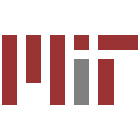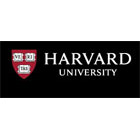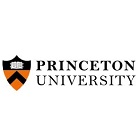- News and articles
- Events
- Find usIDP AustraliaIDP BahrainIDP BangladeshIDP CambodiaIDP CanadaIDP ChinaIDP EgyptIDP GhanaIDP Hong KongIDP IndiaIDP IndonesiaIDP IranIDP JordanIDP KenyaIDP KoreaIDP KuwaitIDP LebanonIDP MalaysiaIDP MauritiusIDP Middle EastIDP New ZealandIDP NigeriaIDP OmanIDP PakistanIDP PhilippinesIDP Saudi ArabiaIDP SingaporeIDP Sri LankaIDP Taiwan, ChinaIDP ThailandIDP TurkeyIDP UAEIDP VietnamIDP Corporate
- Social
- English
Know why Nepalese students love studying in the USA!
The USA attracts the highest number of international students worldwide. Its renowned education system, diverse programs, multicultural experiences, and abundant opportunities make it a popular destination for students from Nepal.
Top reasons to study in the USA
The US is renowned for its world-class education system, diverse culture, and abundant opportunities for personal and professional growth. Here are the top 10 reasons to study in the US:
16 of the world's top 50 universities are in the US (QS Rankings 2025).
With nearly 4,000 universities and colleges, the US has the largest capacity to host international students.
The US is home to the highest number of Fortune 500 companies, including giants like Amazon, Microsoft, and Google.
In 2023, 8 of the 10 largest companies by market value were based in the USA.
The Global Innovation Index 2023 ranks the US among the top three most innovative countries globally.
In 2022, the US led the world in research and development (R&D) spending, investing $885.6 billion.
Student visa requirements for the US
The US Government offers three different student visa types:
Types of student visa | Description | |
1 | F-1 Student Visa | to study at an accredited US college or university |
2 | J Exchange Visa (J-1) | To participation in work and / or study-based exchange program. |
3 | M Student Visa (M1) | for vocational study or training that are primarily non-academic in nature |
*For detailed information, please visit the US Government’s Department of State website.
Read more about USA Student Visa
Intakes available in the USA
Unlike a single intake in Nepalese universities, American colleges and universities offer three intakes. In some universities, intakes may also be referred to as a semester. The three intakes available in the US are:
Fall: A popular intake among Nepalese students, The Fall intake starts in the month of September
Spring: Starts in January; it’s best if you miss the Fall intake
Summer: Available for limited programs and Institutions, the Summer intake usually starts around May
Learn more about intakes in the USA
IELTS for studying in the USA
When you're applying for a US F1 student visa, you'll usually need to take the IELTS Academic exam and get a score of at least 6.5. The minimum score can be different for different types of degree programs. For undergraduate degrees, they typically look for a score of 6.0, while postgraduate programs usually require a 6.5. However, keep in mind that specific universities may have their own score requirements. Some prestigious schools like Ivy League universities often want a higher score, around 7.0, while other schools might ask for 6.0 or 6.5.
Cost to study in the USA
The total cost to study in the US for Nepalese students may vary because of several factors like institution, location, course, living choices, etc. Universities in the US are majorly divided into two categories - Public/State and Private. The education cost at a public/state university is comparatively less than that of a private institution while private universities give more in grants or scholarships. Your expenditure on tuition fees depends on the type of qualification and university or school you opt for. To cover tuition fees, you will need approx. $8,000 to $55,000 (USD) a year (indicative).
Type of Education | Tuition fees in USD (indicative) Before Scholarship |
English language studies | $700 to $2,000 a month |
Community colleges | $6,000 to $15,000 per year |
Undergraduate | $20,000 to $40,000 per year |
Graduate programs | $20,000 to $45,000 per year |
Doctoral degree | $28,000 to $55,000 per year |
Read more about cost of studying in the USA
Scholarships to study in the USA
If you are wondering how to get a scholarship to study in the US, you can contact an IDP expert. They will help apply for eligible scholarships.
However, the amount of funding available and the type of award varies between institutions. Certain research programs may provide up to 100% waiver on the tuition fee besides covering a part of your living expenditures.
Here are some popular scholarship programs you can apply to study in the US as a Nepalese student:
S.No. | Name of the scholarship | Description |
1 | Fulbright Foreign student program | Applicable for international students who are applying to master’s programs; this scholarship covers tuition fees, accident and sickness coverage as per US guidelines, airfare, and living costs for selected universities. |
2 | Hubert Humphrey Fellowship Program | This program is a part of the Fullbright program and aims to bring an accomplished young and mid-career professional from a developing country to study in the US for 10 months of non-degree graduate study and related practical experience |
3 | #YouAreWelcomeHere Scholarship (Non-Government scholarship) | It’s a scholarship and social media campaign designed to welcome international students into the US higher education system irrespective of the subject area |
4 | UEFA | This is a summer program sponsored by Abbey Road Inc. which grants scholarships to 14-18 aged high school student that shows exemplary performance in their academics and extracurricular activities |
5 | AAUW International Fellowships | These fellowships are awarded to international women students for full-time study and research in the US. It supports both graduate and post-graduate students for selected universities. |
*This is an indicative list, speak with your IDP expert for details and the best available options suited to your profile
Please note: An MBA degree can cost significantly more, as can professional programs such as law, medicine, dentistry, some design programs, etc. Most doctoral degrees are 100% funded through research/teaching assistantships and fellowships.
If you want to bring down your educational expenses, it is best to apply to various US scholarships available for Nepalese students.
Top courses to study in the US
If you are wondering about the best course to study in the US, here are the top fields preferred by international students:
Engineering and computer science courses
Life science courses
Business management courses
Top universities to study in the US :
Check where your favourite American university ranks
University | QS Ranking 2025 |
Massachusetts Institute of Technology (MIT) | 1 |
Harvard University | 4 |
Stanford University | 5 |
University of California, Berkeley (UCB) | 10 |
University of Chicago | 11 |
University of Pennsylvania | 12 |
Cornell University | 13 |
California Institute of Technology (Caltech) | 15 |
Yale University | 16 |
Princeton University | 17 |
Columbia University | 23 |
Explore top Universities in the USA and find your right fit
Job prospects in the USA
Due to a skills shortage across various sectors in the American market, international students with specialized skills are highly sought after. Graduates are in high demand in fields such as healthcare, film production, real estate, agriculture, engineering, and computer information technology. Additionally, various internship programs are available for international students, providing valuable work experience during or after their studies.
Cost of living in the USA
In the US, living costs vary by a substantial amount due to the vast territory of the country. Usually, urban areas are more expensive (in or near a big city) in contrast to smaller towns or suburban areas. Therefore, to have a fair view of the general living costs in the US, you should also consider these common expenses when creating your budget:
Expenses | Average yearly cost* |
Books and Stationery | $500 - $1,000 |
Rent & Utilities | $5000 - $20,000 |
Food | $800 - $2000 |
health insurance | $800 - $2500 |
Miscellaneous expenses | $1500 - $2,000 |
*Note: All costs are indicative and may vary from region to region
FAQs (Frequently Asked Questions)
Beginning the application process may feel like a complicated process, so we have answered some commonly asked questions about studying and living in the USA.
Ques 1: What are the exams you need to take to study in the US?
Ans: Depending on your profile and the university requirements, you will need to take an English language proficiency test, and standardised tests (like SAT/ACT/GRE/GMAT, etc.) Consult with an IDP expert to learn about your requirements.
Ques 2: What are the popular fields in the US after the NEB/PCL diploma?
Ans: Here is a list of popular fields in the US after high school:
Business and Management
Engineering
Computer Science and Information Technology
Health Sciences
Social Sciences
Natural Sciences
Arts and Humanities
Education
Environmental Studies
Criminal Justice and Law
Ques 3: How much gap is accepted for study in the US?
Ans: Although the US education system is recognised for its stringent regulations, most academic institutions typically allow for a one to two years gap for undergraduate students. Incases where the gap extends beyond his period, it becomes imperative for students to provide a well-founded explanation.
Ques: How much percentage is required to study in the US?
Ans: The percentage/GPA requirement varies with the university you are applying to and the level you are applying for. However, a percentage of 65% and GPA of 3.0 would be better for your admission to the US institutions.

Send funds securely with money transfer
Explore safe, convenient and fast payment solutions with our market leading partners.

Find your home away from home
We’ll help you discover student accommodation that makes you feel comfortable and at home, no matter where you are.
Cost of living calculator
Estimate how much you will need to cover your expenses including cost of living comparison for various country and accommodation options.
Can’t decide where to study?
Answer 5 quick questions to get personalised content and course recommendations



















